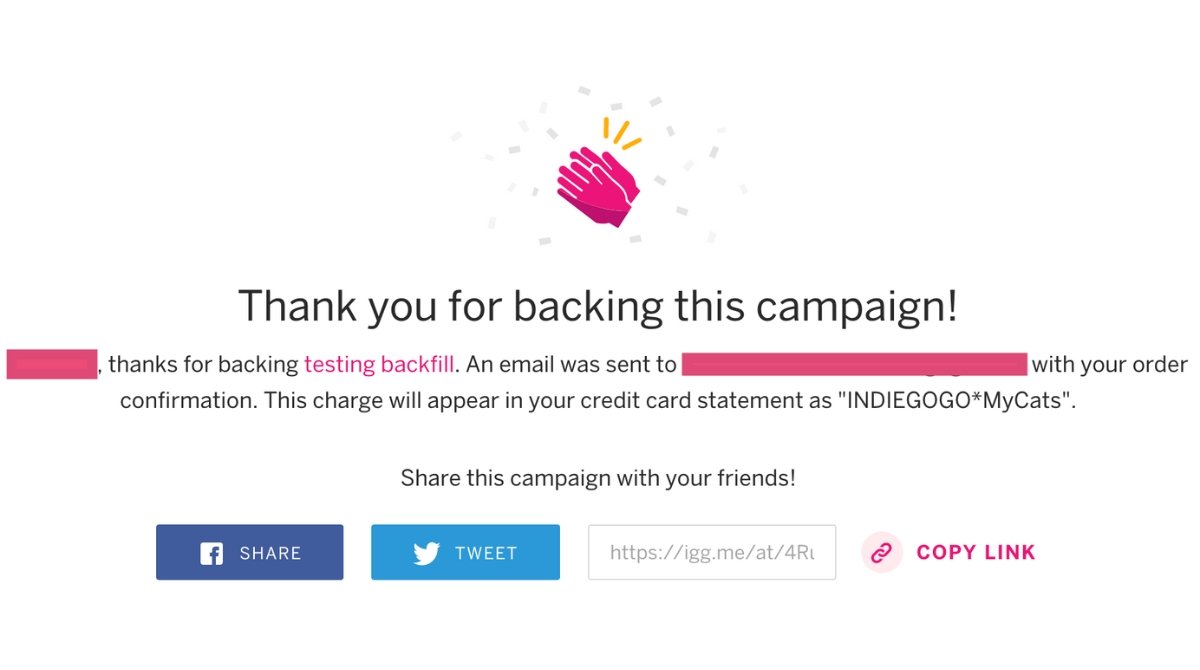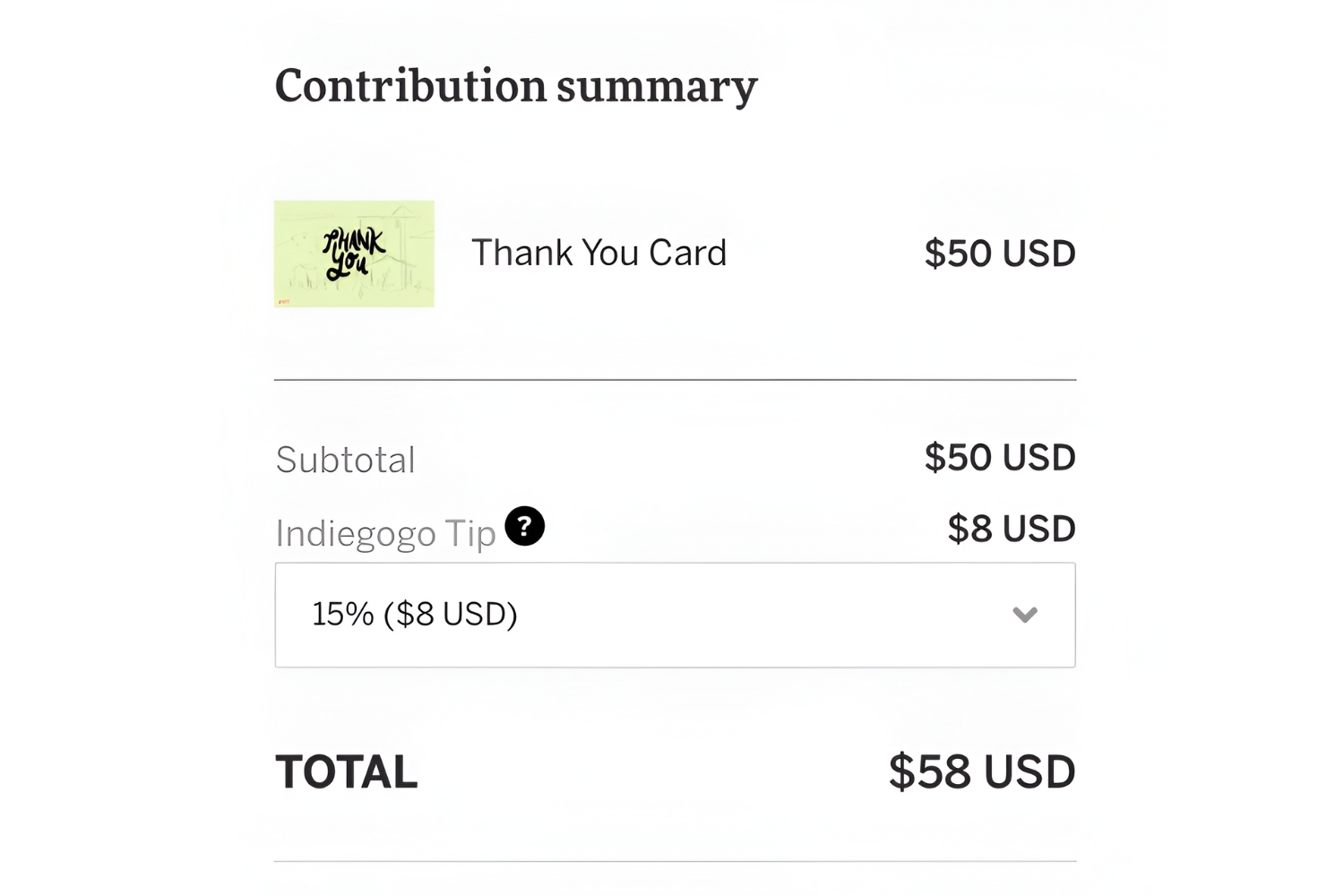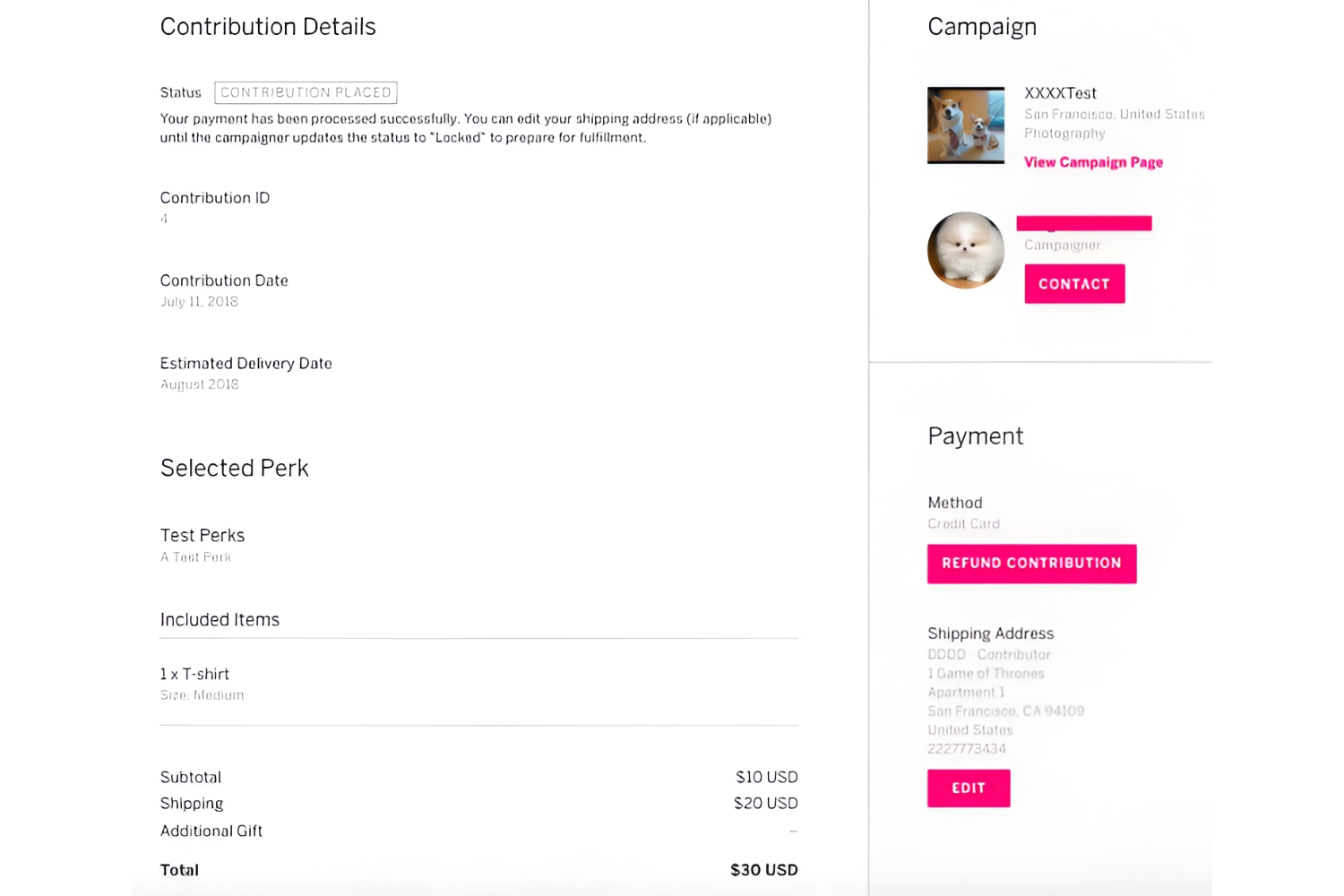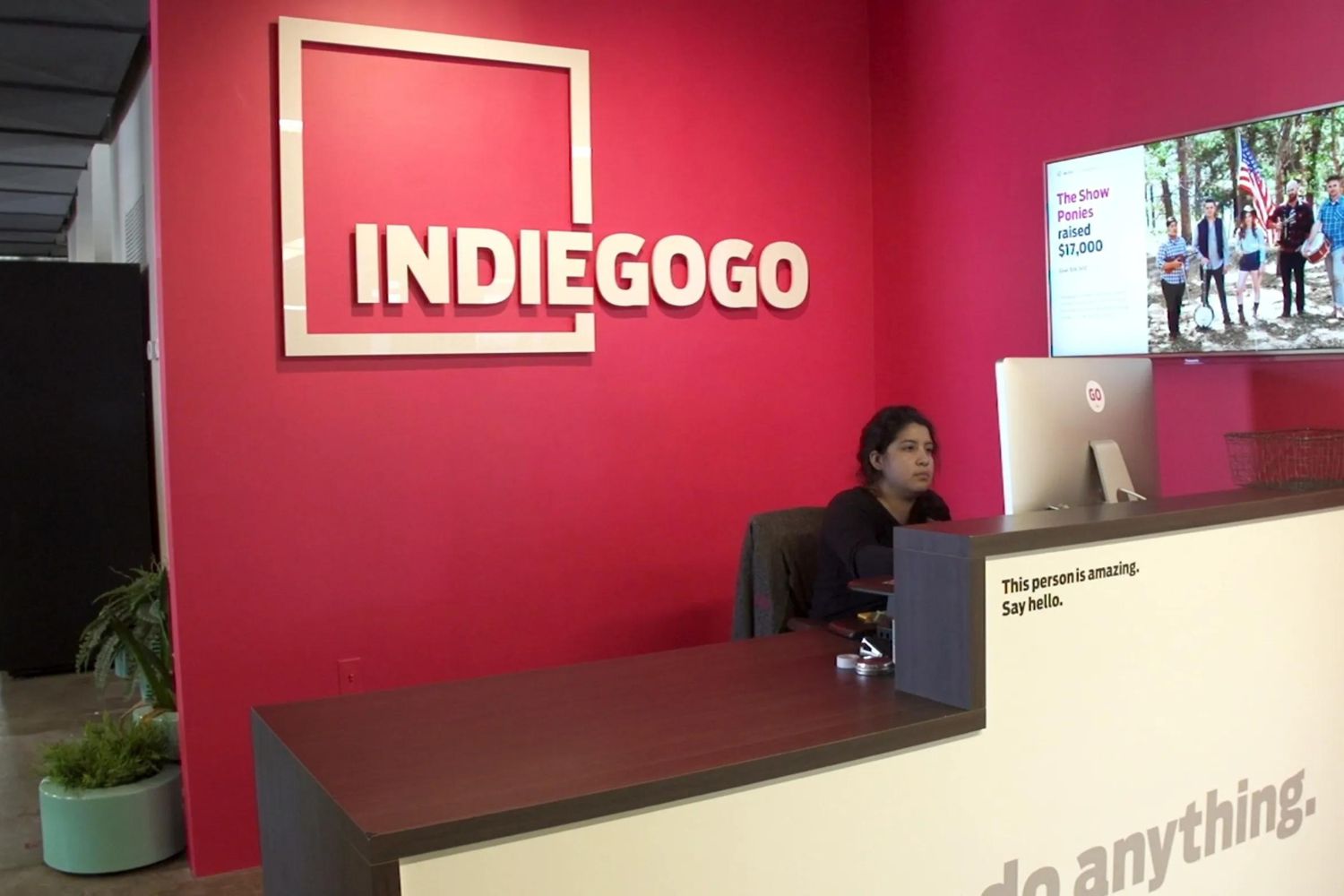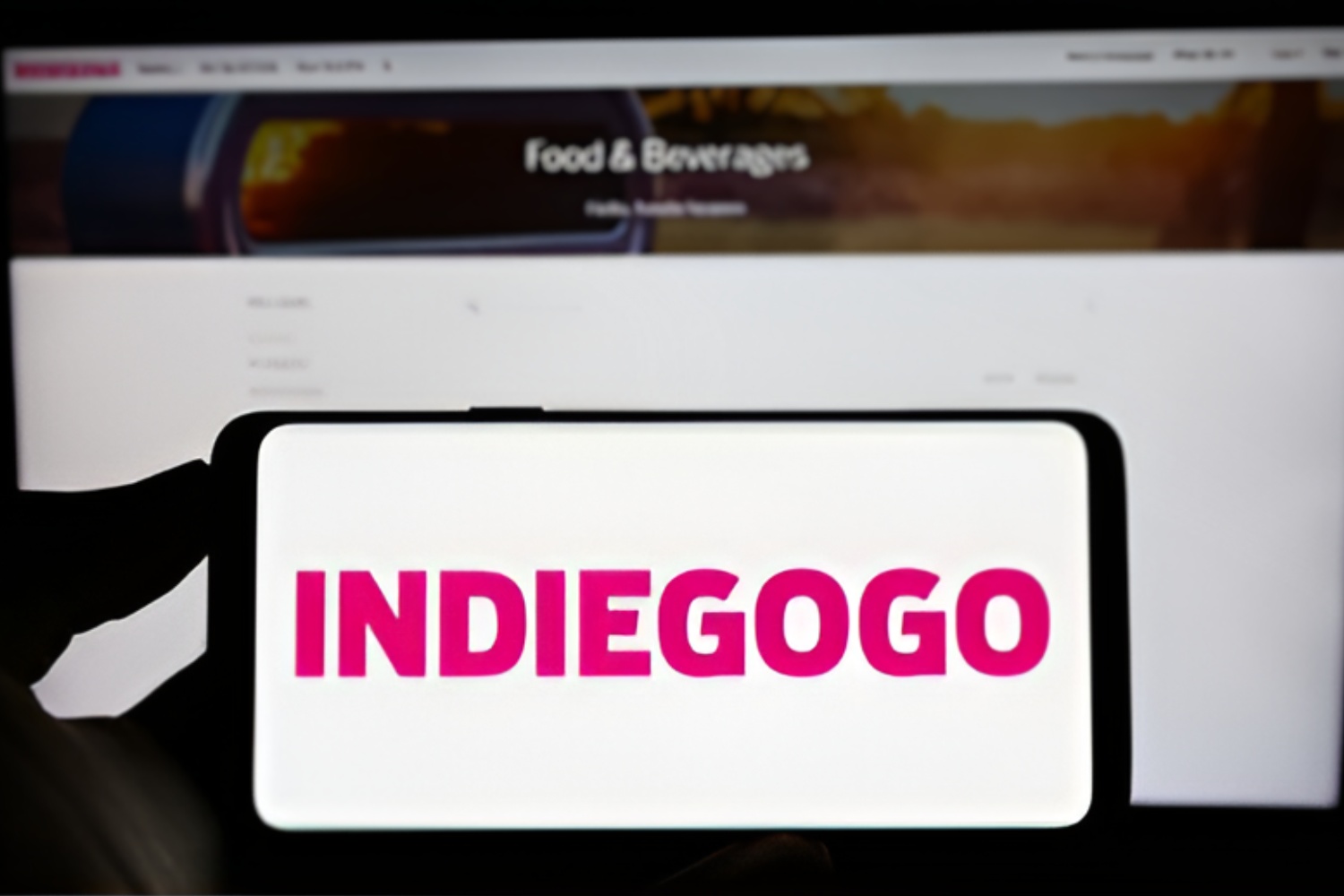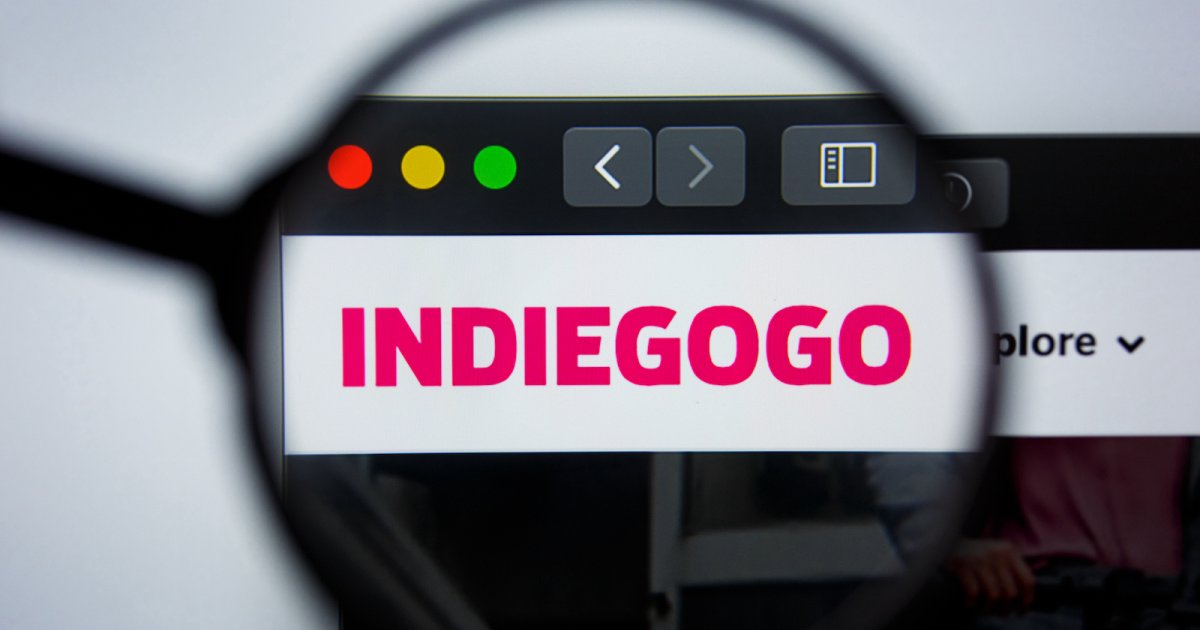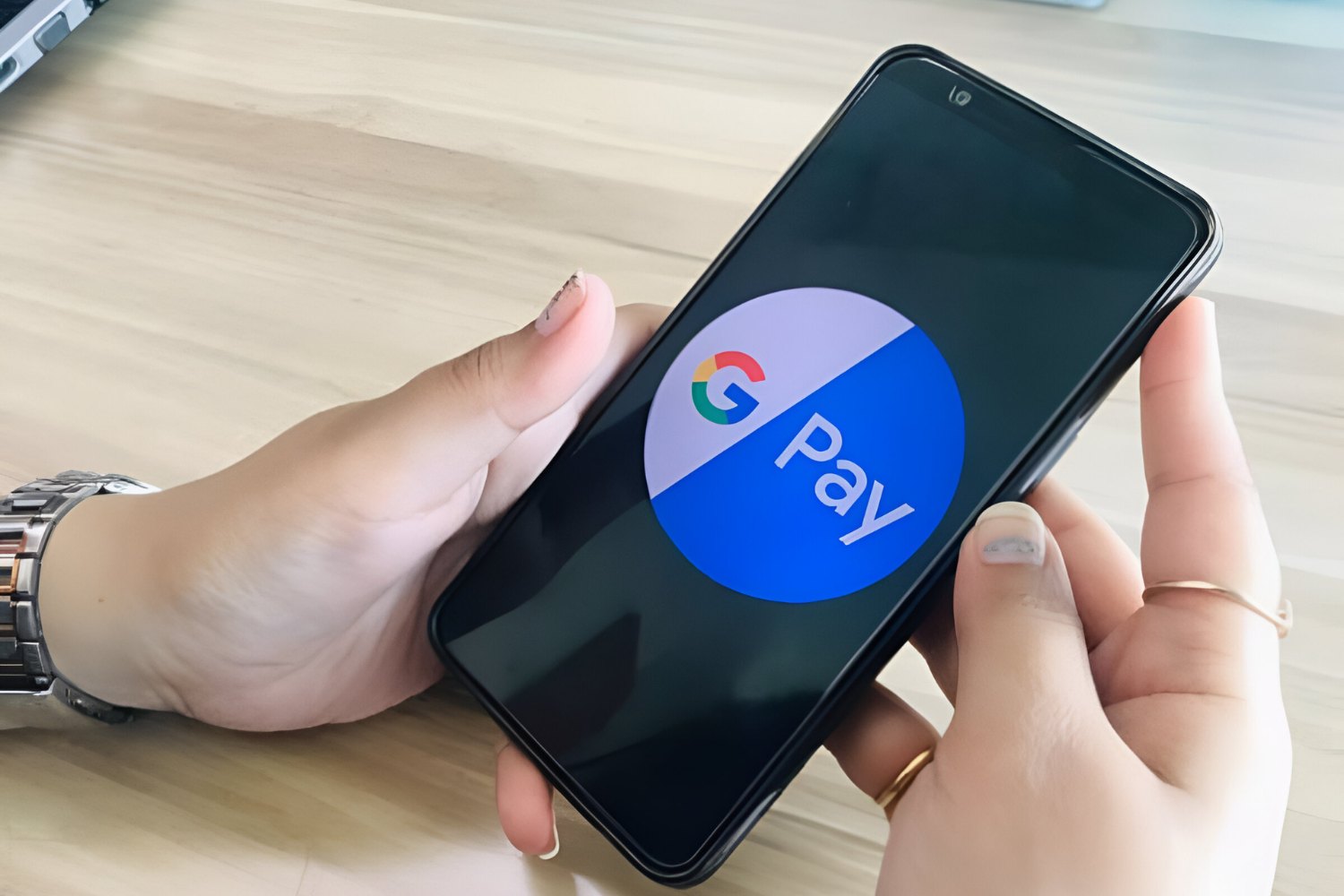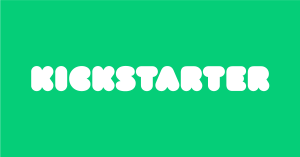Understanding Indiegogo Funding
Indiegogo is a popular crowdfunding platform that allows individuals and businesses to raise funds for their creative projects, products, and ideas. It provides a platform for entrepreneurs, artists, and innovators to connect with a global audience, allowing them to turn their dreams into reality.
One of the fundamental aspects to understand about Indiegogo is how the funding process works. Unlike traditional funding methods, where individuals seek funding from a single investor or institution, Indiegogo leverages the power of the crowd. It enables project creators to raise money from a large number of people who contribute small amounts.
Indiegogo campaigns can have different funding models. The two main types are fixed funding and flexible funding. Fixed funding requires the campaign to reach its stated funding goal within a set timeframe. If the goal is not met, the funds are returned to the contributors. On the other hand, flexible funding allows the project creator to keep any funds raised, regardless of whether or not the funding goal is met.
Contributors to Indiegogo campaigns typically receive perks, rewards, or presales of the product or service being offered. These perks often increase in value based on the contribution amount. For example, a higher contribution may grant early access to the product or an exclusive limited edition version.
Indiegogo also provides project updates and a communication channel between creators and backers to keep the contributors informed about the project’s progress. This transparency helps build trust and establishes a sense of community among the backers.
It’s important to note that funding on Indiegogo is not the same as making a purchase. It’s a form of investment or support for a project that comes with its own set of risks. Even though the creators have a responsibility to deliver on their promises, there is no guarantee that the final product will meet all expectations.
In summary, Indiegogo is a crowdfunding platform that enables individuals and businesses to raise funds for their projects. It provides different funding models, such as fixed and flexible funding, and offers perks or rewards to contributors. It’s essential for both project creators and contributors to understand the dynamics of Indiegogo funding to make informed decisions and maximize the chances of success.
How Indiegogo Campaigns Work
Indiegogo campaigns are a unique and innovative way to raise funds for a wide range of projects. Whether you’re an entrepreneur, artist, or individual with a great idea, understanding how Indiegogo campaigns work is essential to run a successful funding campaign.
First and foremost, it starts with creating a compelling campaign page. This page serves as a digital showcase for your project, where you can outline your goals and explain why people should support it. You’ll need to clearly articulate the purpose of your project, the funding required, and the impact it can make in order to capture the interest of potential contributors.
Once your campaign page is set up, it’s time to spread the word. Indiegogo provides tools and resources to help you reach a wider audience, but the success of your campaign ultimately depends on your marketing efforts. Utilize social media platforms, email newsletters, and personal networks to promote your campaign and encourage people to contribute.
During the campaign, you need to keep the momentum going by regularly updating your backers. Share progress updates, photos, and videos to build excitement and maintain trust with your supporters. Engage with your community by responding to comments, answering questions, and showing appreciation for their support.
When it comes to funding, Indiegogo offers two primary options: fixed funding and flexible funding. With fixed funding, you set a specific funding goal that must be reached within a predetermined timeframe. If the goal is not met, the funds are returned to the contributors. Flexible funding allows you to keep the funds raised, regardless of whether the goal is reached or not.
It’s important to note that Indiegogo charges a platform fee for hosting your campaign and processing payments. This fee varies depending on the type of funding you choose. Additionally, transaction fees apply to credit card payments. It’s crucial to factor in these costs when determining your funding goal.
Once your campaign ends, and if you’ve reached your funding goal, it’s time to fulfill your promises. Deliver the perks, rewards, or pre-orders to your backers in a timely manner. Communication is key throughout this process, so keep your backers informed about the progress and any unexpected challenges that may arise.
In summary, running an Indiegogo campaign involves creating a captivating campaign page, spreading the word, engaging with the community, and effectively managing the funding process. By understanding these dynamics and executing a well-planned campaign, you can increase your chances of reaching your funding goal and successfully bringing your project to life.
When Do Indiegogo Campaigns Charge Your Credit Card?
One common question among Indiegogo backers is when their credit cards will be charged for their contributions. The timing of credit card charges can vary depending on the type of funding model chosen by the campaign creator and several other factors.
In general, Indiegogo campaigns typically charge credit cards shortly after the campaign ends. This is especially true for fixed funding campaigns where the goal must be met before funds are collected. Once the campaign reaches its end date, Indiegogo will review the campaign and process the credit card charges. If the funding goal is not met, credit cards will not be charged, and contributions will be returned to the backers.
In the case of flexible funding campaigns, credit cards may be charged periodically throughout the campaign. This allows campaign creators to access the funds raised so far and use them to further develop their projects. It’s important to note that even in flexible funding campaigns, if the goal is not met, contributors will still be charged for their contributions.
The specific timeline of credit card charges can vary from campaign to campaign. Some campaigns may charge credit cards immediately after a contribution is made, while others may have a scheduled billing date. The campaign creator is responsible for setting these timelines and communicating them to the backers.
Another factor that can affect credit card charging is whether the campaign creator has chosen to use the common practice of pre-authorization. Pre-authorization is a temporary hold placed on the backer’s credit card to ensure that the necessary funds are available when the campaign ends. This helps prevent situations where backers pledge their support but have insufficient funds when the time comes to collect the funds.
It’s crucial for backers to understand the campaign’s funding model and the expected timeline for credit card charges. This information is typically outlined on the campaign page and should be reviewed before making a contribution. If any questions or concerns arise, backers can reach out to the campaign creator for clarification.
In summary, the timing of credit card charges on Indiegogo campaigns varies depending on factors such as the funding model chosen by the campaign creator and the use of pre-authorization. Backers should carefully review the campaign details to understand when their credit cards will be charged for their contributions.
Factors Affecting Credit Card Charging on Indiegogo
Several factors can influence the credit card charging process on Indiegogo campaigns. Understanding these factors can help backers better anticipate when their credit cards will be charged and what to expect throughout the funding process.
One significant factor that can influence credit card charging is the funding model chosen by the campaign creator. As mentioned earlier, Indiegogo offers two main funding models: fixed funding and flexible funding. In fixed funding campaigns, credit cards are charged only if the campaign reaches its funding goal within the specified timeframe. On the other hand, in flexible funding campaigns, credit cards are charged regardless of whether the goal is met or not.
Another factor that can affect credit card charging is the campaign’s specific timeline. The campaign creator sets the duration of the campaign, which can range from a few days to several weeks. Credit card charges typically occur shortly after the campaign ends, with the exact timing dependent on the campaign’s specific setup. Backers should review the campaign details to understand the estimated timeline for credit card charging.
The use of pre-authorization is another factor that can impact the credit card charging process. Pre-authorization involves placing a temporary hold on a backer’s credit card to ensure the availability of funds when the campaign ends. This practice helps prevent situations where backers pledge their support but don’t have sufficient funds to fulfill their commitment. However, it’s important to note that pre-authorization does not guarantee that the campaign will reach its funding goal; it simply ensures that funds are available if needed.
The payment processor used by Indiegogo can also have an impact on credit card charging. Indiegogo uses a trusted payment processing system that securely handles credit card transactions. However, the specific processing timeframes may vary depending on the payment processor’s policies and any additional verification steps required.
Additionally, external factors such as technical issues or unforeseen circumstances can sometimes cause delays or disruptions in the credit card charging process. While these situations are rare, it’s essential for backers to remain patient and stay informed about any updates or announcements from the campaign creator or Indiegogo regarding the issue.
In summary, the factors affecting credit card charging on Indiegogo campaigns include the funding model chosen by the campaign creator, the campaign’s specific timeline, the use of pre-authorization, the payment processor’s policies, and any unforeseen circumstances that may arise. Backers should carefully review the campaign details and stay informed to anticipate when their credit cards will be charged for their contributions.
The Common Practice of Pre-Authorization
When it comes to crowdfunding on platforms like Indiegogo, the practice of pre-authorization is commonly used. Pre-authorization is a temporary hold placed on a backer’s credit card to ensure the availability of funds when the campaign ends.
The purpose of pre-authorization is to prevent situations where backers pledge their support but don’t have sufficient funds to fulfill their commitment. By placing a hold on the credit card, it verifies that the backer has the necessary funds to cover their contribution.
Pre-authorization typically occurs when a backer makes a pledge to a campaign. The credit card is authorized for the specified amount, but the actual charge is not immediately processed. Instead, the funds are temporarily held on the card, ensuring that they are available if needed.
It’s important to note that pre-authorization does not guarantee that a campaign will reach its funding goal. Even if the campaign doesn’t meet its target, the pre-authorized funds may still be held on the credit card for a certain period before being released back to the backer.
The duration of the pre-authorization hold can vary depending on the payment processor used by Indiegogo. While the hold is in place, the pre-authorized amount is typically unavailable for other transactions, potentially affecting the cardholder’s available credit limit.
It’s worth mentioning that the pre-authorization hold can sometimes result in a temporary pending charge on the backer’s credit card statement. This is a common practice among credit card issuers to indicate that a pre-authorization has been placed on the account. However, this is not an actual charge and will not be reflected in the final billing statement if the campaign is not successfully funded.
After the campaign ends, the credit card charging process takes place. If the campaign reaches its funding goal, the pre-authorized funds are converted into an actual charge, and the backer’s credit card is billed accordingly. However, if the campaign does not reach its goal, the pre-authorization hold is released, and the funds are made available on the backer’s credit card once again.
It’s important for backers to understand the pre-authorization process and the potential impact it may have on their credit card. Backers should ensure they have sufficient funds available or adjust their spending accordingly to accommodate the pre-authorized amount. In case any concerns or questions arise, backers can reach out to the campaign creator or contact Indiegogo’s support team for assistance.
In summary, pre-authorization is a common practice used in crowdfunding campaigns on platforms like Indiegogo. It involves placing a temporary hold on a backer’s credit card to verify the availability of funds. It’s crucial for backers to understand the pre-authorization process and its potential impact on their credit card statement and available credit limit.
The Difference Between Fixed and Flexible Funding
When launching a crowdfunding campaign on Indiegogo, creators have the option to choose between two primary funding models: fixed funding and flexible funding. Understanding the difference between these two models is essential for both campaign creators and backers.
Fixed funding is a funding model where the campaign creator sets a specific funding goal that must be met within a predetermined timeframe. In this model, credit cards are charged only if the campaign reaches its funding goal. If the goal is not met, all contributions are returned to the backers, and the campaign does not receive any funds. Fixed funding provides a level of security for backers, as it ensures that the project will only move forward if the funding goal is successfully achieved.
On the other hand, flexible funding offers more flexibility to campaign creators. In this model, credit cards are charged regardless of whether the funding goal is met or not. Campaign creators are allowed to keep the funds raised, regardless of whether it exceeds or falls short of the set goal. Flexible funding may be preferred by campaign creators who believe that even partial funding can help them progress their project or idea.
The choice between fixed and flexible funding depends on several factors. For campaign creators who have set milestones or specific requirements that must be met to successfully execute their project, fixed funding is often the preferred option. It ensures that they have the necessary funding to fulfill their commitments to their backers. On the other hand, campaign creators who have fewer constraints or who can adapt their plans based on the funds raised may opt for flexible funding.
From a backer’s perspective, understanding the funding model is crucial when deciding to support a campaign. For those who prefer a higher level of certainty and assurance that their contribution will only be charged if the campaign reaches its goal, backing a fixed funding campaign is recommended. Conversely, backers who are more flexible and willing to support a project regardless of whether the goal is met may choose to support flexible funding campaigns.
It’s important to note that regardless of the funding model chosen, campaign creators have a responsibility to communicate with their backers and provide regular updates on the project’s progress. Transparency and clear communication help foster trust between campaign creators and backers, regardless of whether the project is funded under the fixed or flexible funding model.
In summary, the difference between fixed and flexible funding lies in how credit card charges are processed. Fixed funding requires the campaign to reach its funding goal in order for credit cards to be charged, while flexible funding allows campaign creators to keep the funds raised regardless of whether the goal is met. Both models have their advantages and considerations, and it’s important for both campaign creators and backers to understand the implications of each funding model when participating in crowdfunding campaigns on Indiegogo.
Managing Your Credit Card Charges on Indiegogo
When participating in crowdfunding campaigns on Indiegogo, it’s important to effectively manage your credit card charges to ensure a smooth and seamless experience. Here are some tips to help you navigate the process:
1. Plan your budget: Before making any contributions, assess your financial situation and determine how much you’re comfortable investing in a campaign. Consider your existing financial commitments and make sure you have enough funds available to cover your contribution.
2. Read the campaign details: Review the campaign page thoroughly to understand the funding model chosen by the campaign creator and the estimated timeline for credit card charges. Pay attention to any specific instructions provided by the campaign creator regarding payments.
3. Monitor campaign updates: Stay informed by regularly checking for updates from the campaign creator. They may communicate any changes or delays in the credit card charging process or provide additional information related to the campaign. Being aware of these updates will ensure you have the latest information regarding the campaign’s progress.
4. Keep track of your contributions: Take note of the campaigns you’ve backed and the corresponding contribution amounts. This will help you monitor your credit card statements and ensure that you’re only being charged for the campaigns you’ve intended to support.
5. Review your credit card statements: Regularly review your credit card statements to verify the charges for your Indiegogo contributions. If you notice any discrepancies or unauthorized charges, promptly reach out to Indiegogo’s customer support to address the issue.
6. Manage your credit card limits: Indiegogo charges are considered as regular credit card transactions. Keep an eye on your credit card limits to ensure that you have enough available credit to cover your contributions. This is particularly important if you’re contributing to multiple campaigns or if you have other financial obligations to consider.
7. Canceling a pledge: If circumstances change and you need to cancel your pledge to a campaign, ensure that you understand the campaign’s refund policy and cancellation procedures. Promptly communicate with the campaign creator to request a cancellation and follow the necessary steps to receive any refund if applicable.
8. Contact Indiegogo support if needed: If you encounter any difficulties or have questions regarding credit card charges on Indiegogo, don’t hesitate to reach out to Indiegogo’s customer support. They can provide assistance and address any concerns you may have regarding the charging process or any potential payment issues.
By following these tips, you can effectively manage your credit card charges on Indiegogo and navigate the crowdfunding process confidently. Remember to always stay informed, track your contributions, and monitor your credit card statements to ensure a positive crowdfunding experience.
How to Cancel a Pledge on Indiegogo
If you find yourself in a situation where you need to cancel a pledge on Indiegogo, there are steps you can take to ensure a smooth cancellation process. Here’s a guide on how to cancel a pledge:
1. Review the campaign’s refund policy: Start by reviewing the campaign page or the updates provided by the campaign creator to understand their refund policy. Some campaigns may offer full or partial refunds for canceled pledges, while others may have policies that prevent refunds after a certain period.
2. Contact the campaign creator: Reach out to the campaign creator directly through the Indiegogo messaging system or any designated communication channels. Explain your situation and your intention to cancel your pledge. Provide them with the necessary details, such as your backer name, contribution amount, and any other relevant information, to assist them in locating your pledge.
3. Follow the campaign creator’s instructions: The campaign creator may have specific instructions on how to cancel a pledge. They may ask you to fill out a form, send them an email, or take certain steps within the Indiegogo platform. Follow their instructions closely to ensure that your cancellation request is processed correctly.
4. Check for any cancellation deadlines: Some campaigns may have specific deadlines for canceling pledges. If you wish to cancel your pledge, make sure to do so within the specified deadline to be eligible for any refunds or adjustments.
5. Monitor your credit card statements: After canceling a pledge, monitor your credit card statements to ensure that the canceled pledge is reflected correctly. If you notice any discrepancies or charges related to a canceled pledge, reach out to Indiegogo’s customer support for assistance.
6. Be patient and follow up: Keep in mind that it may take some time for the campaign creator to process your cancellation request and issue any refunds, if applicable. Be patient and allow the campaign creator a reasonable amount of time to complete the necessary steps. However, if you haven’t received any response or resolution after a reasonable period, consider reaching out to Indiegogo’s customer support for further assistance.
7. Learn from the experience: If you’ve decided to cancel a pledge, take the opportunity to reflect on the campaign and your decision. Consider what prompted you to cancel and use that knowledge to inform your future involvement in crowdfunding campaigns. This can help ensure that you make informed decisions and have a positive experience as a backer.
Remember, each campaign may have its own specific cancellation process and refund policies. It’s essential to communicate directly with the campaign creator and carefully follow their instructions to ensure a smooth cancellation experience.
In summary, to cancel a pledge on Indiegogo, review the campaign’s refund policy, contact the campaign creator directly, follow their instructions for cancellation, and monitor your credit card statements. Be patient throughout the process and reach out to Indiegogo’s customer support if needed. By following these steps, you can effectively cancel your pledge and navigate the crowdfunding platform with confidence.
Tips for Staying Informed About Credit Card Charging on Indiegogo
Staying informed about credit card charging on Indiegogo is crucial for both campaign creators and backers to ensure a smooth funding process. Here are some tips to help you stay informed throughout the credit card charging process:
1. Read the campaign details: Thoroughly review the campaign page and description to understand the funding model chosen by the campaign creator and their specific timeline for credit card charging. Look for any details regarding pre-authorization, billing dates, or updates related to payment processing.
2. Sign up for campaign updates: Many campaign creators provide the option to sign up for updates through Indiegogo’s platform. By subscribing to these updates, you’ll receive notifications and important information about the campaign’s progress, including any updates related to credit card charging.
3. Check the campaign updates section: Regularly visit the campaign updates section on the campaign page. Campaign creators often use this section to communicate important updates, changes in the funding process, or any issues related to credit card charging. Staying informed through these updates can help you anticipate any upcoming credit card charges.
4. Engage with the campaign community: Participate in the campaign’s community by asking questions and leaving comments on the campaign page. This not only helps you gather information but also allows you to interact with the campaign creator and other backers. Additionally, creators may provide updates or address concerns raised by the community related to credit card charging.
5. Reach out to the campaign creator: If you have specific questions or concerns about credit card charging, don’t hesitate to reach out to the campaign creator through the Indiegogo messaging system. They are usually responsive and can provide you with the necessary information or clarifications regarding the charging process.
6. Visit the Indiegogo Help Center: Indiegogo’s Help Center provides a wealth of information and resources to assist both campaign creators and backers. It includes frequently asked questions, guides, and articles that cover various aspects of the crowdfunding process, including credit card charging. Take advantage of these resources to educate yourself and find answers to any specific questions you may have.
7. Stay alert for Indiegogo communications: Indiegogo may occasionally send important communications and updates via email. Make sure that emails from Indiegogo are not going to your spam or promotions folder and regularly check your inbox for any messages related to credit card charging or payment processing.
8. Follow Indiegogo’s official social media channels: Indiegogo regularly shares updates, success stories, and tips on their official social media channels. By following these channels, you’ll have access to the latest news and information about the platform, including any updates or changes related to credit card charging.
By following these tips, you can stay informed about credit card charging on Indiegogo campaigns. Remember that communication is key, and staying engaged with the campaign creator and the Indiegogo community will help ensure a positive crowdfunding experience.
Final Thoughts on Credit Card Charging on Indiegogo
Credit card charging is a critical aspect of the crowdfunding experience on Indiegogo. Whether you’re a campaign creator or a backer, understanding the credit card charging process is essential for a successful crowdfunding campaign. Here are some final thoughts on credit card charging on Indiegogo:
Transparency and Communication: Open and transparent communication between campaign creators and backers is vital throughout the credit card charging process. Clear communication about the funding model, credit card charging timelines, and any updates related to payment processing helps build trust and ensures everyone is on the same page.
Responsibility of Campaign Creators: Campaign creators have a responsibility to manage the credit card charging process effectively. They should clearly communicate their intended timeline, respond to backer inquiries promptly, and provide regular updates on the campaign’s progress. By taking these steps, campaign creators can ensure that backers are informed and feel confident in their support.
Backer Due Diligence: As a backer, it’s important to do your due diligence before making a pledge. Carefully review the campaign details, consider the funding model chosen by the creator, and understand the potential risks associated with the project. Make sure you have a clear understanding of the credit card charging process and any refund policies before making a commitment.
Managing Expectations: It’s crucial for both campaign creators and backers to manage expectations throughout the credit card charging process. Campaign creators should be realistic about their funding goals and communicate the potential challenges and risks to backers. Backers should also be aware that even if a campaign successfully reaches its funding goal, there may still be unforeseen obstacles that can impact the final outcome.
Flexibility and Adaptability: Crowdfunding campaigns can be unpredictable, and the credit card charging process is just one aspect that can evolve throughout the campaign. Both campaign creators and backers should be flexible and adaptable to any changes or unforeseen circumstances that may arise. Being open to adjustments and maintaining clear communication can help navigate any challenges smoothly.
Customer Support: If you encounter any issues or have questions about credit card charging on Indiegogo, utilize Indiegogo’s customer support resources. They are available to assist with any concerns or inquiries related to payment processing, ensuring that any issues are addressed promptly and efficiently.
Remember, the credit card charging process on Indiegogo is crucial for the success of a crowdfunding campaign. By having a clear understanding of the process, maintaining open communication, and managing expectations, both campaign creators and backers can contribute to a positive and rewarding crowdfunding experience.
Ultimately, crowdfunding is all about bringing innovative ideas and projects to life with the support of a community. By working together and understanding the dynamics of credit card charging, we can help bring inspiring projects and ideas to fruition.







